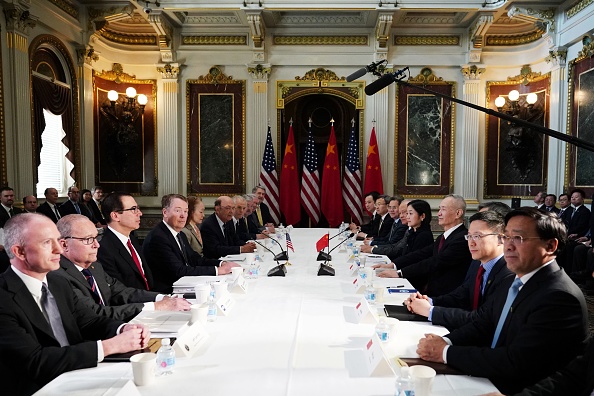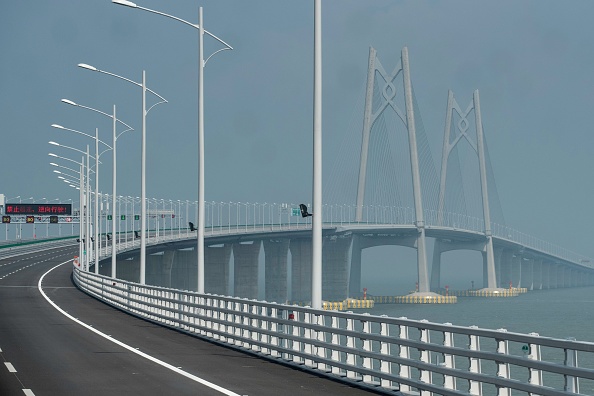
 The Devil is in the Details
The Devil is in the DetailsThis Wednesday commenced the latest round of US-China trade negotiations in Washington, following last week's meetings in Beijing.
Negotiations this week resulted in China pledging to purchase $1.2 trillion of US goods, while President Trump said he would "certainly consider" an extension on the March 2 deadline to reach a trade deal, during which tariffs would be raised on $200 billion of Chinese goods. Delegations are also discussing the possibility of a Trump-Xi meeting in late March at Trump's Mar-a-Lago golf club.
Discussions this week also centered around structural reform to China's economy, which include issues of intellectual property rights and forced technology transfers. Structural issues have been troubling US policymakers for years but Washington has had little luck in convincing Beijing to make significant reforms.
Now, across the negotiation table, delegations have began "drafting language for six memorandums of understanding on proposed Chinese reforms," although precise terminology over the reforms remains a sticking point for negotiators. "It's not surprising that this week has been more challenging," one source said. "Once you move from putting together outlines to filling out the details, that is where things would naturally become more challenging."
It is still unclear how productive these memorandums of understanding will be in the long term, given Beijing's cautious approach to structural reform. Some analysts predict that instead of coming down hard on structural issues, President Trump may defer to promoting topical, "confidence-building" issues with concrete agreements to close in on a deal. These issues include gaining Visa and Mastercard access to the Chinese economy and balancing the US trade deficit with China, which China has pledged to reduce the trade imbalance from $323 billion to $0 by 2024.
 This Week in Chinese Tech
This Week in Chinese TechChina unveiled plans to build the first solar power station in space this week, which was announced in the state-sponsored Science and Technology Daily newspaper. The power station, which is already being constructed in the western city of Chongqing, aims to harness solar energy, redirect it to Earth in the form of electric energy, and then transfer the energy into metropolitan power grids. Plans for the space station come after China became the first country to reach the dark side of moon early last month. As China's space ambitions grow, its ambitions for science fiction do as well, says contributor Phil Cunningham, and China's latest blockbuster film "The Wandering Earth" is just another signal of the country's ambitions to make breakthroughs in space.
Back on Earth, a new smartphone app called "Study the Great Nation" has become the most popular app in China's iTunes App Store. The app's name itself a homophonic pun on the word "study," which also sounds like Xi, as in President Xi Jinping. Produced by the Communist Party, the app offers users an ideological medley of things to do: users can follow the latest state media reports, chat with friends, watch a TV series about China's revolutionary history, or study and take quizzes on the constitutionally-enshrined "Xi Jinping Thought." The app owes at least some of its popularity to government directive, which has been calling on its members to download the app.
Chinese telecomms equipment companies also made big gains this week after Samsung unveiled the first foldable smartphone this Wednesday. Chinese display maker Tianma Microelectric Co. saw $612 million of its shares traded Wednesday, about 18 time the daily average turnover for last year, according to Bloomberg, while another Chinese display maker, BOE Technology Group Co., saw similarly impressive gains. The smartphone, named the "Galaxy Fold," is priced at a steep $1,980. It isn't expected to rake in big profits for Samsung, and is instead intended to entertain a "limited launch" of a million units or less. That hasn't stopped Chinese telecoms companies from rallying, however, with stocks continuing to rise.
 Asia's Greater Bay Area to rival US Bay Area
Asia's Greater Bay Area to rival US Bay AreaThis Monday, the Chinese government released blueprints to connect the economies and infrastructure of the Greater Bay Area, which includes the semiautonomous regions of Hong Kong and Macau and 9 other Guangzhou cities— one of which is Shenzhen, home to Huawei and Tencent. The goal is to create a cluster of cities concentrated in innovation and technology that could rival places like Silicon Valley or New York by 2035.
The Greater Bay Area is one of the most important economic powerhouses in Asia. According to HSBC, the collective economies of the region produce 37% of China's exports and 12% of its GDP ($1.58 trillion), and is home to some 70 million people.
Plans to connect the cities, although vague, still promise Hong Kong and Macau the governing autonomy they enjoy under the "one country, two systems" policy, in which the two semiautonomous regions maintain their economic and administrative independence. However, critics worry that the plan is not only a wasteful use of money, but also a concealed way of drawing Hong Kong closer to mainland China's orbit. Just last year, China celebrated the opening of a $20 billion, 34-mile bridge connecting Hong Kong and Macau to the Guangdong city of Zhuhai. Some Hong Kong residents worry that the bridge represents a "steady encroachment of mainland China into the city's affairs," while others worry the bridge is destined to be a wasteful "white elephant" infrastructure project, according to China-US Focus contributor Kemel Toktomushev.
Addressing concerns over Hong Kong's autonomy, Hong Kong Chief Executive Carrie Lam Cheng Yuet-ngor said Thursday that the plans "will not, as some people worry, blur the boundaries between the two systems, nor will it weaken Hong Kong's status as a separate customs territory. It certainly will not lead to the assimilation of Hong Kong into the mainland either."
Prepared by China-US Focus editorial teams in Hong Kong and New York, this weekly newsletter offers you snap shots of latest trends and developments emerging from China every week, while adding a dose of historical perspective.
- 2019-02-16 Trade Talks, Round 3: Waiting for Trump-Xi?
- 2019-02-08 Welcoming the Pig
- 2019-02-02 The Final Countdown: One Month Until Trade Talks Deadline
- 2019-01-26 How Slow Will it Go?
- 2019-01-18 Countdown to Trump-Kim: Round Two
- 2019-01-11 Kim Jong-un Visits Beijing
- 2019-01-04 Cross-strait tensions mount on anniversary
- 2018-12-21 Xi’s 40th Anniversary Speech
- 2018-12-14 Post-G20 Detentions & Tech Tensions
- 2018-11-30 Trump and Xi Set to Face Off at the G20
- 2018-11-26 Xi Strengthens Alliances in Preparation of G20
- 2018-11-16 World Leaders Meet at ASEAN and APEC Summits to Discuss Economic Strategy
- 2018-11-09 US and China Hold Delayed Diplomatic and Security Dialogue
- 2018-11-02 Presidents Xi and Trump Talk Possible Trade Deal
- 2018-10-26 With U.S. Pressure, China and Japan Grow Closer
- 2018-10-19 Secretary Mattis Meets Chinese Counterpart in Singapore
- 2018-10-12 Trump and Xi May Meet at the G20
- 2018-10-05 U.S. Vice President Articulates Hard Line on China in Speech
- 2018-09-28 A Turbulent Week For China-U.S. Relations at the UNGA
